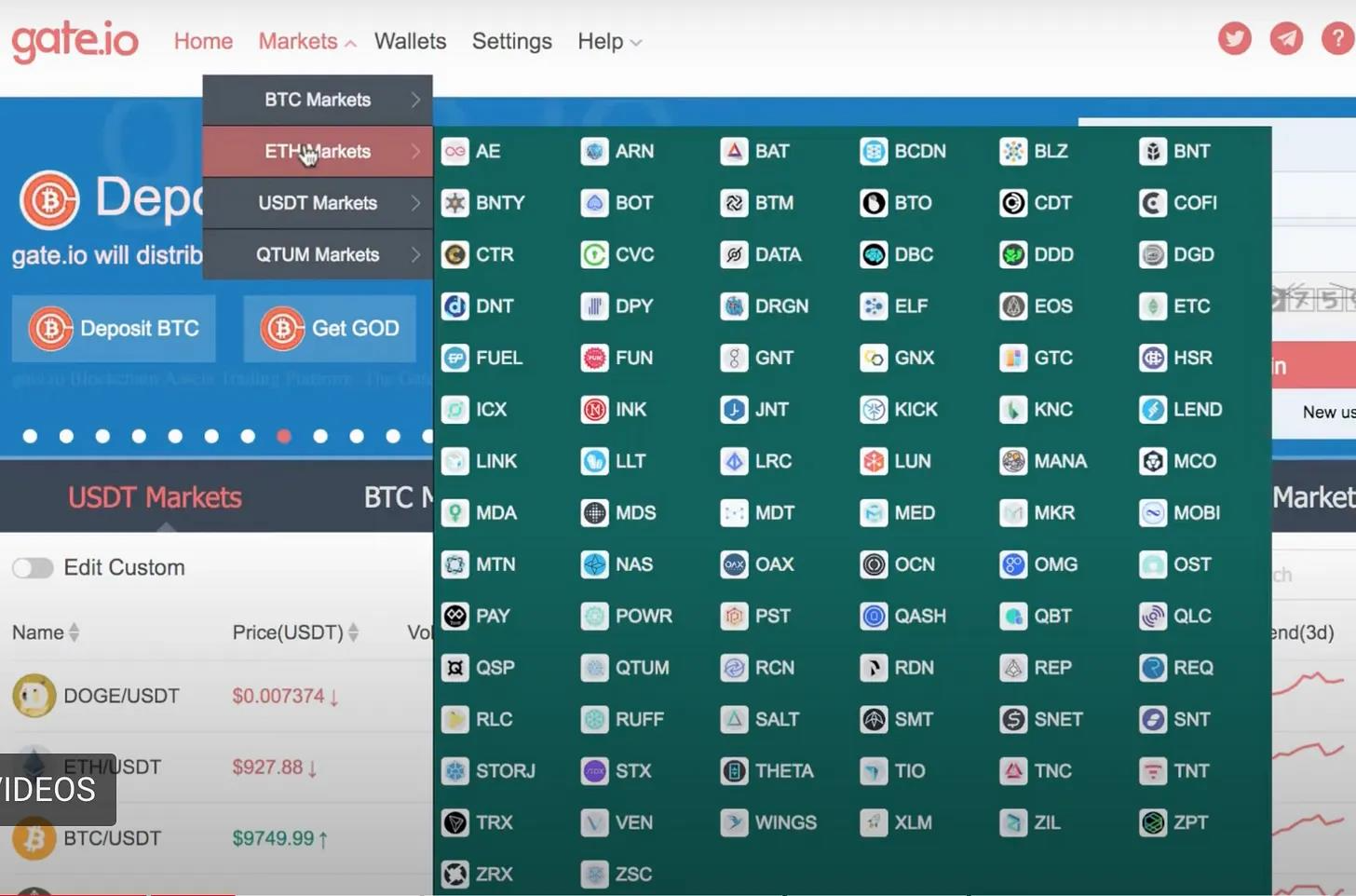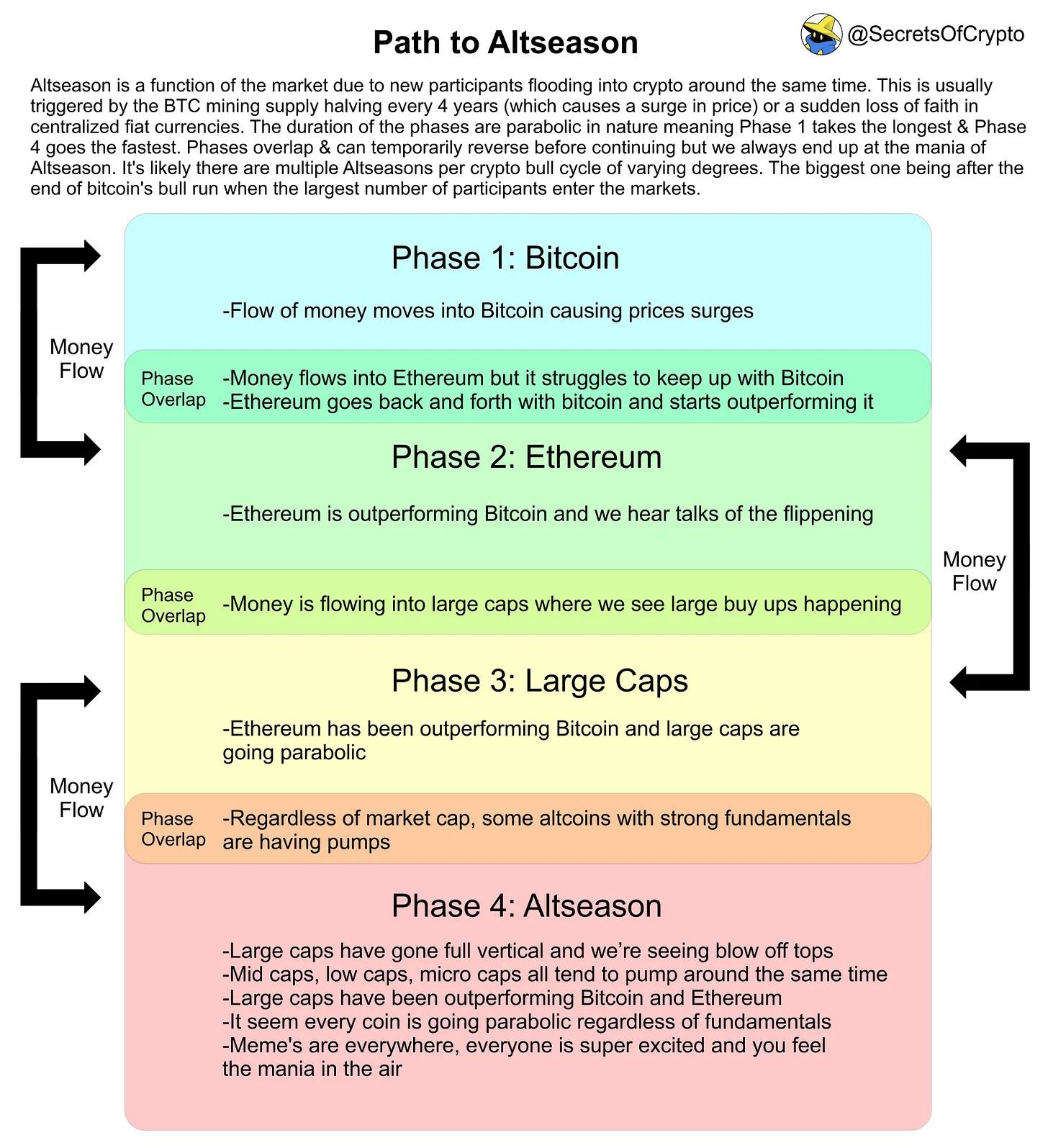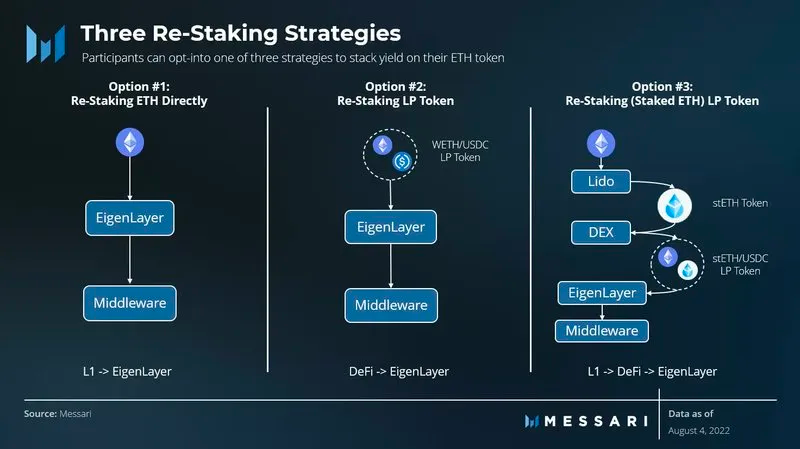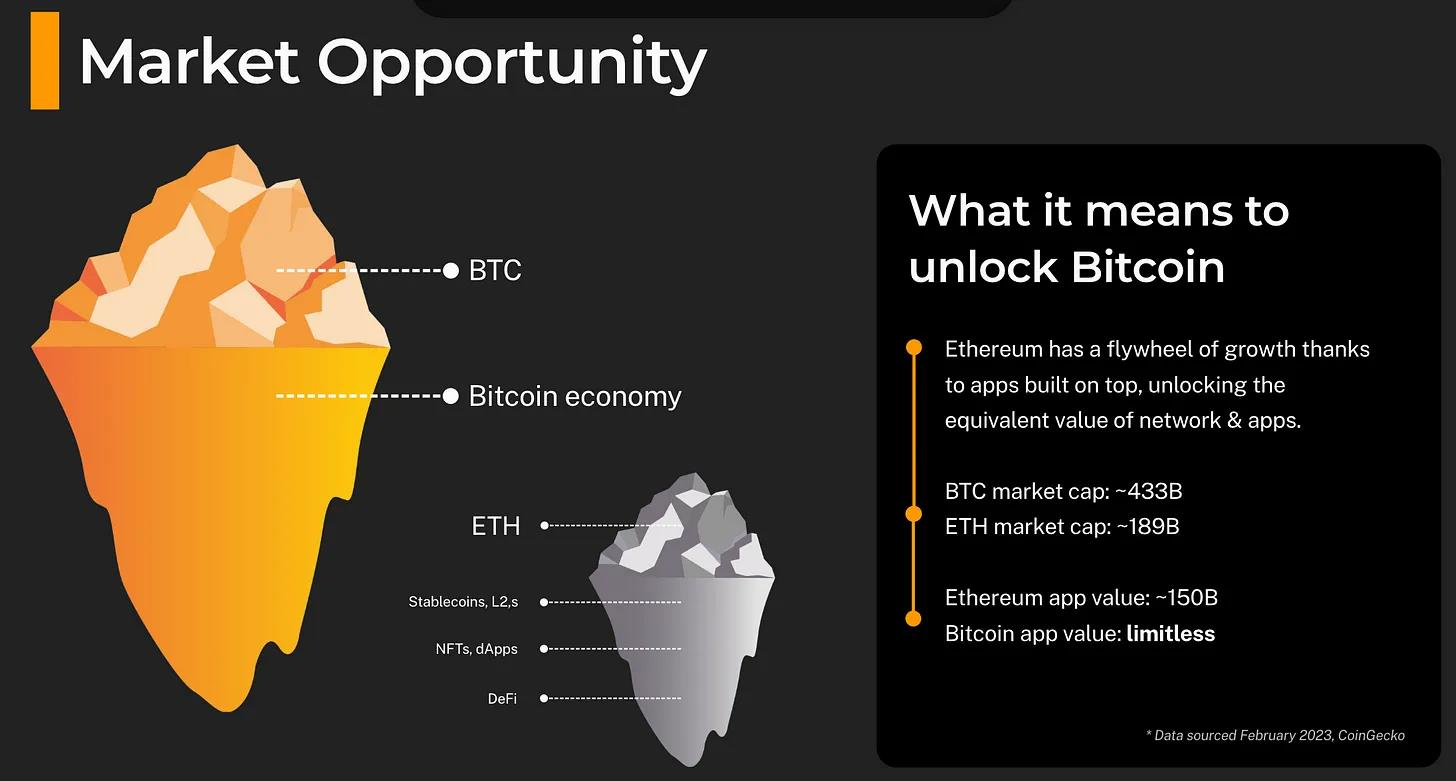Echoes of History: Each bull and bear market is slightly different, but the overall situation is basically similar
Original Title: 《Echoes of the Past: What the Deja Vu Market Tells Us About the Next Bull Market.》
Written by: IGNAS | DEFI RESEARCH
Compiled by: 深潮 TechFlow
It is widely believed that cryptocurrencies need to go through three crypto cycles to truly achieve this goal: the first cycle is to gain knowledge and learn important lessons about how cryptocurrencies work, the second cycle is to gain some profits and feel comfortable, and the third cycle is to achieve financial freedom.
For me, this is the second bear market, and the third bull market is about to arrive. I am ready.

I feel like I have experienced the current phase of the cryptocurrency market before. Because I indeed went through it, specifically the market cycle of 2019-2020.
But I am not just talking about the downward price trend. I am referring to the overall market sentiment: government regulatory crackdowns, public indifference or accusations of cryptocurrencies being scams, and the PvP model of profiting through the alternation between different tokens.
If you joined the cryptocurrency market during the last bear market or even earlier, you might feel the same way. This sense of familiarity is a huge advantage because your past experiences in the crypto space lay the groundwork for the upcoming next bull market.
Every bull and bear market has its differences, but the overall situation is basically similar.
This article will explore how the past has taught us to recognize the beginning of the next bull market based on my experiences.
Familiar Market
First Bull Market and Crash
Deja vu is a feeling that makes one think they have experienced the current situation before. While this feeling usually lasts only a few seconds, the current phase of the cryptocurrency market has lasted for years.
I joined the cryptocurrency market at the end of 2017, having previously come across a BBC article that introduced how Bitcoin was continuously hitting new historical highs. I felt FOMO for the first time.
I bought some Bitcoin, and the price quickly doubled. I felt very excited, thinking I was smart for getting into a new financial paradigm early. This excitement quickly turned into confidence, and I believed that if I invested in newer and cheaper tokens, I could make even more money.
I searched for exchanges on Google because the exchange I used for the first time (Bitstamp) didn't have many junk coins, and somehow I found Gate.io CEX. I liked their old user interface because I could clearly see all the token symbols and, most importantly, the logos.

I did some "research" by reading their websites and whitepapers, and all these projects seemed revolutionary. Decentralized supply chain management, decentralized storage, decentralized banking! The FOMO sentiment grew stronger.
I kept pouring my scholarship funds into these tokens, but at some point, there were too many of them, and they all looked similar, so I decided to invest based on the colors of the token logos without doing much due diligence.
Long story short, I lost most of my money.
None of them built anything substantial. Just a website and a whitepaper.
This is a common story for newcomers to the cryptocurrency space. Greed, naive faith in new ideas, and a lack of experience and knowledge about how the cryptocurrency market operates led to disaster. Many suffered heavy losses and eventually gave up on the crypto space. However, those who stayed and learned from their mistakes had a better chance of success.
I also felt disappointed but was curious about what went wrong.
This curiosity became my main motivation to continue writing about cryptocurrencies.
Second Bull Market and Crash
Curiosity and greed are powerful motivators to wake up in the morning.
After the Bitcoin crash of 2017-2018, I remained interested in cryptocurrencies and kept up with all the news. By the end of 2018, my enthusiasm for cryptocurrencies led me to find my first job at a Korean exchange, where I worked for about four years. It was a great experience; I learned how market makers operate, analyzed hundreds of tokens, communicated with their teams, and attended dozens of conferences.
But the market was boring and calm. The relative calm of the market is just one similarity to the current market phase. Other similarities include:
- Regulatory crackdowns on ICOs, especially in Asia, similar to the current regulatory crackdowns in Western countries.
- Cryptocurrencies being labeled as scams, dead, and Ponzi schemes, at least 385 times to date.
- Waiting for institutional adoption: Bitcoin began to be purchased by institutions, similar to the current spot Bitcoin ETF.
- Cryptocurrency profits shifting from one token to another without increasing the total size of the cryptocurrency market.
- Waiting for mass adoption of cryptocurrencies.
There are many other similarities, but the general claim that it is boring in the cryptocurrency space now is hardly worth mentioning compared to the last bear market.
Back in 2018-2019, there really wasn't much to do. No DeFi, no NFTs, and all my trading was done on exchanges. The most exciting thing was IEOs (Initial Exchange Offerings), and possibly the EOS token sale, which raised a record $4.2 billion but delivered almost nothing.
There was hardly anything exciting in the market.
However, it seemed that suddenly, things began to change. At the beginning of 2020, I discovered a new hot token called AMPL (Ampleforth), which completely changed my understanding of token economics. It was the first token with elastic supply.
The AMPL smart contract automatically increases or decreases the total supply based on a target price that fluctuates between $1.06 and $0.96, a process known as "Rebase." If the price exceeds $1.06, even at 2 AM, the protocol will automatically mint more AMPL to bring the price back to the target level. If the price falls below $0.96, the protocol will burn excess tokens. Long story short, this means you don't own a fixed amount of AMPL but rather a percentage of the supply. Investors would see their AMPL tokens increase or decrease, which is different from how any other currency operates.
This was new, exciting, and it brought me profits. I didn't really understand its significance (the main reason being speculation on how others would operate during the rebase), but I loved seeing the number of AMPL tokens in my wallet grow. At that time, it was a new hot thing.
Soon, more new hot things began to emerge, the most exciting of which were liquidity mining for BAL and COMP tokens. They rewarded protocol users with free tokens proportionally based on the amount deposited into their smart contracts.
It was a shocking moment. And when such moments arise, you should pay extra attention!
Because occasionally, an astonishing token model emerges that can change the trajectory of the entire industry. The originality of new token economic models drives the industry forward and can spawn new bull markets—here are my thoughts on the five most innovative tokens during DeFi Summer.
Why were they giving away tokens for free? Initially, it didn't make much sense because previously you either had to buy new tokens in an ICO/IEO or complete countless tasks to receive an airdrop worth $5.
The craziest was the issuance of Yearn Finance's YFI token. By simply depositing my stablecoins into Curve, I earned free YFI tokens at an annualized yield of over 1000%.

Things got even stranger and crazier with the liquidity mining of SushiSwap. Its mechanism was to deposit ETH/USDT to earn SUSHI, or buy SUSHI and deposit it into the ETH/SUSHI LP pool to earn more SUSHI.
This two-pool token mechanism was essentially a real Ponzi scheme because the price of SUSHI would only rise if more people joined.
Dozens of two-pool launches and crashes occurred daily. The game theory of winning was simple: enter first, mine as many tokens as possible, and sell when the new funds flowing in are less than the token issuance and exit funds.
Eventually, the influx of new hot pools diluted attention, and the amount of ETH/USDT entering these newly emerging pools daily decreased. As token prices fell, leading to lower annualized yields, the subsequent total locked value (TVL) flowed to higher-yielding places, causing these pools to collapse.
But this crash was an important lesson and a recurring pattern in cryptocurrencies that ultimately provides the best opportunities in crypto. As long as you know when to exit in time.
How Bull Markets Start and End
Here is a summary from SecretsOfCrypto's "Path to Altcoin Season," which nicely encapsulates how funds flow into the cryptocurrency ecosystem through Bitcoin and gradually shift towards altcoin seasons.
But I believe there is a key element in the bull market story: innovative money printing.

What I am referring to is not central banks printing money, which certainly benefits cryptocurrency prices. I mean the inherent money printing machine of cryptocurrencies.
In the cryptocurrency space, we claim to hate the money printing of central governments because it dilutes the purchasing power of fiat currency, increases inequality, and ultimately leads to currency collapse.
However, the cryptocurrency industry is the best at printing money.
Imagine this: after Bitcoin was launched, it took years for significant competitors to emerge. Litecoin was the first altcoin, launched in 2011. Then Ethereum launched in 2015. The following years featured Bitcoin fork coins (such as Bitcoin Cash, Bitcoin SV, and Bitcoin Gold). This was the original first-layer season.
These Bitcoin fork coins were also the original money printing machines in cryptocurrencies because Bitcoin holders would receive new tokens, profiting if they sold them on the launch day.
However, launching new coins is expensive because these proof-of-work mechanisms require electricity to maintain network security.
With ERC20 tokens supported by Ethereum smart contracts, issuing new tokens became easier and cheaper. Now anyone can issue tokens at a lower cost. Thousands of new tokens can be launched with just a website, a whitepaper, and a lot of promises.
However, the most important impact of Ethereum and ERC20 is not technical but social. Before ERC20, tokens were primarily seen as payment currencies or value storage tools. But with ERC20, tokenization became ubiquitous. As cryptocurrency prices rose, the use cases for cryptocurrencies continued to increase.
Then, suddenly, the prices crashed.
The reason for the crash was that the funds flowing into the cryptocurrency system could not sustain the exponential growth of new tokens launched daily. We ended up printing too many tokens. Additionally, as the number of tokens in circulation increased, attention became diluted, leading to confusion about investment directions.
Then, during DeFi Summer, a similar pattern repeated itself.
During this period, protocols distributed tokens for free to liquidity providers or users through airdrops. The stated purpose of these tokens was more modest and ethical this time: consistent with the ethics of cryptocurrencies, decentralized protocols.
Looking back at 2017, when the ICO bubble burst, it seemed that everything needed a utility token. Now, in the DeFi space, protocols need a governance token. We are still primarily in this phase, but disappointment with DeFi governance is rapidly increasing.
However, the real motivation behind these tokens is, and still is, to kickstart liquidity. Without liquidity, protocols like Aave, Uniswap, or Curve have no value.
Just like in 2017, when the daily issuance of tokens exceeded the funds entering the system, the DeFi market crashed. It's a different story, but the fundamental reasons for the crash are the same.
Interestingly, NFTs also experienced a crash for the same reasons. Crypto Punks and BAYC triggered FOMO among those who missed out, leading to the creation of new NFTs. However, when attention and new NFT issuance could not sustain price levels, the market eventually crashed.
Currently, only a few NFT series have successfully survived, which makes me believe that the NFT market may be close to the bottom.
New Bull Market: New Stories, Same Mechanisms
Let’s briefly revisit SecretsOfCrypto's "Path to Altcoin Season." The point here is that bull markets begin with new fiat currency entering Bitcoin, and then funds flow into lower market cap tokens.
But I believe that before new funds enter the system, innovative leverage and the re-utilization of existing crypto capital will pave the way for profit opportunities in the bull market.
DeFi Summer is an example: before the prices of ETH and BTC began to soar, DeFi tokens were oscillating up and down. Native cryptocurrency users deposited ETH and stablecoins to mine brand new tokens that told an enticing story of a new financial system. Some sold these tokens, but many believed in the DeFi story and held onto them.
The pre-bull market bubble of DeFi and the wealth it brought was enough to persuade newcomers to enter the cryptocurrency system and buy ETH/BTC. Of course, the impact of the low-interest-rate environment is much greater than our relatively small money printing.
What interests me most is that before DeFi Summer arrived, the infrastructure for DeFi was already in place, but few paid attention to DeFi before liquidity mining became a thing.
I believe we are currently in a season similar to the pre-DeFi bull market, laying the groundwork for innovative money printing and compelling narratives. In light of this, I want to highlight those top opportunities that have the potential to create bubbles larger than the short-term narratives we have witnessed in this bear market.
Re-staking
EigenLayer is at the forefront of this narrative.
In simple terms, Ethereum's security can be "rented" by allowing Ethereum stakers to "re-stake" their ETH. This allows for the protection of multiple networks simultaneously. However, this also brings increased risk, and to compensate, re-stakers can earn higher returns. You guessed it, you will get a new virtual currency that promises to change our world.

Many liquidity mining-style scam token economic strategies will be invented, each more creative than the last to prevent you from selling. Our focus will be on finding those tokens that can create a flywheel effect so that as the token inflates, the adoption rate of dApps can also grow.
And this has already begun, with Stader's rsETH being a liquid re-staking token.

But re-staking is a larger narrative that goes beyond Ethereum. Cosmos has launched Replicated Security, where ATOM stakers lend their security to other blockchains, with Neutron being the first to implement this feature. I expect more blockchains to adopt the idea of re-staking, just as they adopted liquidity mining rewards during DeFi Summer.
Our task is to understand how re-staking works before the bubble begins because by then, time is money.
Bitcoin DeFi
This is a brand new narrative that has not yet garnered enough attention even among DeFi fans of the Ethereum Virtual Machine (EVM).
I am optimistic about the potential of Ordinals and Inscriptions in development, but currently, they lack the scam token economics to sustain the inflation of newly issued tokens.
It is worth noting that Bitcoin Ordinals are the basic units of Bitcoin, namely satoshis or sats, which have been minted and integrated with unique sets of information. Therefore, satoshis can become unique and have the same identity as basic non-fungible tokens.
However, I believe this will change. Ordinals and Inscriptions have already demonstrated a strong demand for NFTs, fungible tokens, and DeFi within the Bitcoin ecosystem. Stacks, with its enhanced functionality and deep integration with Bitcoin, is well-positioned to meet this demand.

Stacks is a Bitcoin-based smart contract layer where DeFi applications execute on Stacks and settle on Bitcoin. Stacks is preparing for the large-scale launch of sBTC.
sBTC is a decentralized Bitcoin-pegged system that facilitates the transfer of Bitcoin between Bitcoin and Stacks. Bitcoin sent to Stacks is converted to sBTC at a 1:1 ratio. Converting it back to Bitcoin requires trust assumptions, making it minimally trusting but not trustless. Unlike wBTC or RBTC, sBTC avoids centralized custodians and uses an open user network to enhance Bitcoin liquidity for DeFi and NFTs on Stacks.
I am optimistic about Stacks because Bitcoin will soon enter its ecosystem, and there aren't many places to put Bitcoin right now. This is a good thing because capital and attention will focus on the first few applications that launch.
One of them is Alex. ALEX is continuously expanding its leading edge in the Stacks DeFi space, emphasizing cryptocurrency trading and lending settled in Bitcoin. At its core is an AMM protocol that powers its issuance platform and order book. It has also established a BSC/Ethereum USDT bridge on the Stacks Chain.
Importantly, Alex has also launched an on-chain BRC20 token indexer (wrapper) so that you can trade BRC20 tokens on Stacks and add any scam token economics you want.
When Will the Bull Market Start?
The two narratives mentioned earlier stand out for their ability to issue new tokens while managing inflation, driven by compelling stories (Bitcoin security sharing and DeFi) and innovative token economics.
That said, the injection of new funds is crucial for sustainability and the lifespan of the bubble. Currently, narratives appear and fade due to a lack of new funds entering the system. However, I believe these specific narratives have the potential to attract external capital into the entire cryptocurrency market, particularly buyers purchasing ETH for re-staking and buyers purchasing Bitcoin for the Bitcoin DeFi narrative.
But remember, these two narratives will also have moments of collapse. There will be too many tokens minted to meet the pace of demand and attention growth. Do not blindly believe the stories they will sell you, so formulate an exit strategy before it's too late.
The key is timing, and the most important factor remains the macro situation, which is also improving. Over the past few years, we have been hit by three major narratives: the Federal Reserve's liquidity cycle, wars, and new government policies. However, recently we have seen a shift, with regulatory crackdowns slowing down, China entering deflation, and inflation and interest rates peaking.
If we believe in cryptocurrency cycles, we expect to reach an ATH of $69,000 by Q4 2024, followed by a crazy bull market before reaching a new ATH in Q4 2025.

If this is the case, these two money-printing Ponzi bubble periods will begin before the new ATH. Now is the time to study and learn because when the fun begins, we need to be ready.












